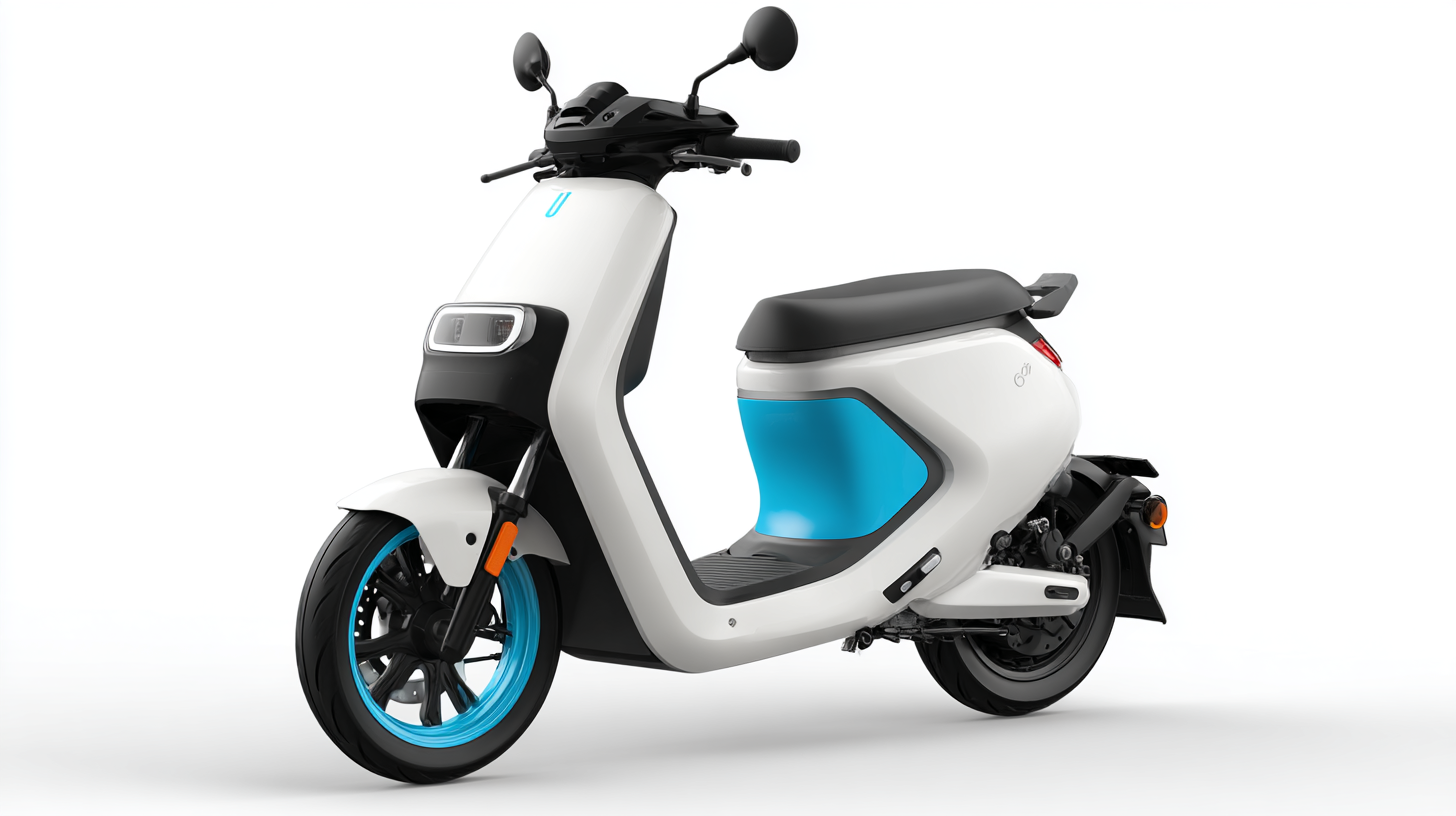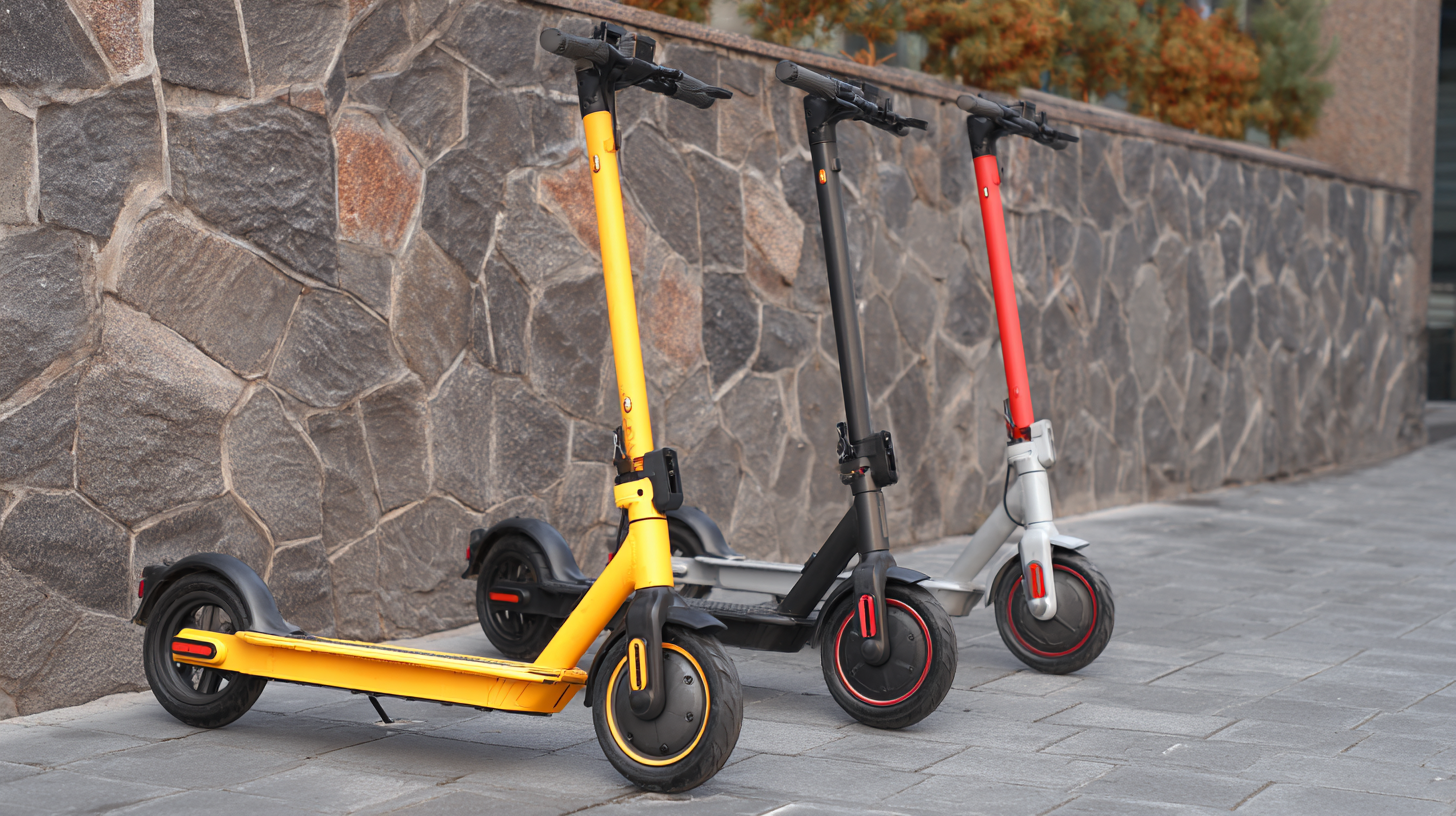As we look towards the future, the electric scooter market is poised for significant evolution, reflecting broader global trends and consumer preferences. The year 2025 promises to bring forth innovative designs, improved technologies, and enhanced functionalities in Scooter Electric models, setting the stage for a comprehensive comparison of the best options available. In this blog, we will explore the leading strategies shaping the electric scooter landscape, including advancements in battery life, safety features, and eco-friendliness. By evaluating various models, we aim to equip readers with the knowledge needed to make informed decisions and choose the perfect Scooter Electric that aligns with their lifestyle and values.

Join us as we delve into the exciting developments and top-performing electric scooters predicted to dominate the market in the coming years.
As we venture into 2025, the electric scooter market is poised for significant technological advancements, particularly in battery innovations. One of the most exciting developments is the emergence of solid-state batteries, which promise to deliver longer range and faster charging times compared to traditional lithium-ion batteries. These next-generation batteries not only enhance the overall performance of electric scooters but also improve safety by reducing the risk of overheating and fire hazards.

Moreover, new battery management systems are being integrated into electric scooters, allowing for smarter energy usage. These systems can optimize performance by analyzing riding patterns and adjusting power output accordingly. Coupled with regenerative braking technology, riders can now expect to recover energy during their rides, effectively extending their scooter's range. As manufacturers continue to invest in research and development, we can anticipate a surge of high-performance electric scooters powered by these groundbreaking battery technologies in the near future.
The electric scooter market is witnessing dynamic growth, driven by changing consumer preferences and regulatory shifts. As urban mobility continues to transform, more individuals are gravitating towards eco-friendly transportation methods, significantly contributing to the expected surge in market size. According to recent projections, the micro-mobility sector in regions like France and Canada is anticipated to grow at impressive compound annual growth rates (CAGR) of 13.431% and other notable figures, illustrating a robust demand for electric scooters among consumers seeking convenience and sustainability.
In addition to shifting preferences, the introduction of electric vehicle (EV) incentives and regulations is reshaping the landscape for low-powered electric scooters and motorcycles. This trend is projected to fuel an estimated market growth of approximately USD 23.74 billion from 2024 to 2028. As companies innovate and adapt to these changes, understanding the intricacies of consumer behavior and market dynamics becomes crucial. With advancements in technology and the evolving regulatory frameworks, the electric scooter sector is poised for substantial transformation, making it essential for industry players to stay ahead in this fast-paced environment.
This chart represents the estimated market share percentages of various types of electric scooters in 2025. The data indicates that affordable models are expected to dominate the market, while premium and high-performance models hold significant shares as well.
As electric scooters continue to gain popularity in urban mobility, a comparative review of top models reveals significant insights into their performance metrics and user feedback. According to a recent report by Navigant Research, the global electric scooter market is expected to reach $38.5 billion by 2025. This burgeoning market is characterized by diversity in design and functionality, as manufacturers strive to meet varying consumer needs.
When examining performance metrics, attributes such as battery life, speed, and weight capacity emerge as critical factors. For instance, the Xiaomi Mi Electric Scooter has been noted for its impressive range of up to 30 kilometers and a top speed of 25 km/h, making it ideal for daily commutes. User feedback highlights its portability, weighing just 12.5 kg, which facilitates easy transport. Conversely, the Segway Ninebot Max has garnered attention for its robust build and enhanced battery life, offering an impressive range of 65 kilometers, catering to users who prioritize long-distance travel. These insights illuminate the diverse preferences consumers must navigate in their decision-making process, reflecting a market increasingly driven by performance and user experience.
| Model | Top Speed (mph) | Range (miles) | Battery Capacity (Wh) | Weight (lbs) | User Rating (out of 5) |
|---|---|---|---|---|---|
| Model A | 20 | 25 | 500 | 28 | 4.5 |
| Model B | 22 | 30 | 600 | 25 | 4.7 |
| Model C | 18 | 20 | 400 | 30 | 4.3 |
| Model D | 25 | 40 | 700 | 30 | 4.8 |
| Model E | 19 | 22 | 450 | 24 | 4.2 |
As the electric scooter market continues to grow, sustainability has emerged as a driving factor in the design and manufacturing processes. A recent report by the International Energy Agency (IEA) indicates that global electric scooter sales are projected to reach 50 million units by 2025. This surge creates a pressing need for eco-friendly manufacturing practices that minimize environmental impact.
 Manufacturers are increasingly adopting sustainable materials, such as recycled aluminum and biodegradable plastics, to enhance their product’s lifecycle sustainability. According to a study by the Global Sustainability Initiative, up to 40% of an electric scooter's environmental footprint can be attributed to its manufacturing materials. To tackle this, leading companies are collaborating with suppliers who adhere to green practices, which not only improves their brand image but also meets the rising consumer demand for sustainable products.
Manufacturers are increasingly adopting sustainable materials, such as recycled aluminum and biodegradable plastics, to enhance their product’s lifecycle sustainability. According to a study by the Global Sustainability Initiative, up to 40% of an electric scooter's environmental footprint can be attributed to its manufacturing materials. To tackle this, leading companies are collaborating with suppliers who adhere to green practices, which not only improves their brand image but also meets the rising consumer demand for sustainable products.
Moreover, advancements in battery technology are central to the eco-friendly shift in the electric scooter industry. A report from the Battery Innovation Laboratory highlights that next-generation lithium-ion batteries are becoming more efficient and easier to recycle, potentially reducing the carbon footprint of electric scooters by 30% by 2025. As these trends continue to unfold, the focus on sustainability will likely reshape the market landscape, ensuring that electric scooters contribute positively to urban mobility while also caring for the planet.
As the electric scooter market continues to evolve, 2025 presents an intriguing array of models that cater to both budget-conscious consumers and those seeking premium features. In the realm of cost analysis, understanding the best value electric scooters is essential for making an informed decision. Typically, models that offer solid performance, reliable batteries, and essential safety features can be found in the mid-range prices. Scooters such as the EcoRider 2025 and SwiftScoot Pro deliver impressive mileage and durability without breaking the bank, making them excellent choices for urban commuters.
On the other hand, premium electric scooters like the LuxRide X2000 and Speedy Elite 2025 justify their higher price tags with advanced technology and superior craftsmanship. These models often include features such as regenerative braking systems, smart connectivity, and enhanced suspension for a smoother ride. While the initial investment may be significant, the long-term benefits—like lower maintenance costs and improved performance—might outweigh the costs for many users. Ultimately, the choice between best value and premium features should align with individual preferences, lifestyle, and budget constraints.
